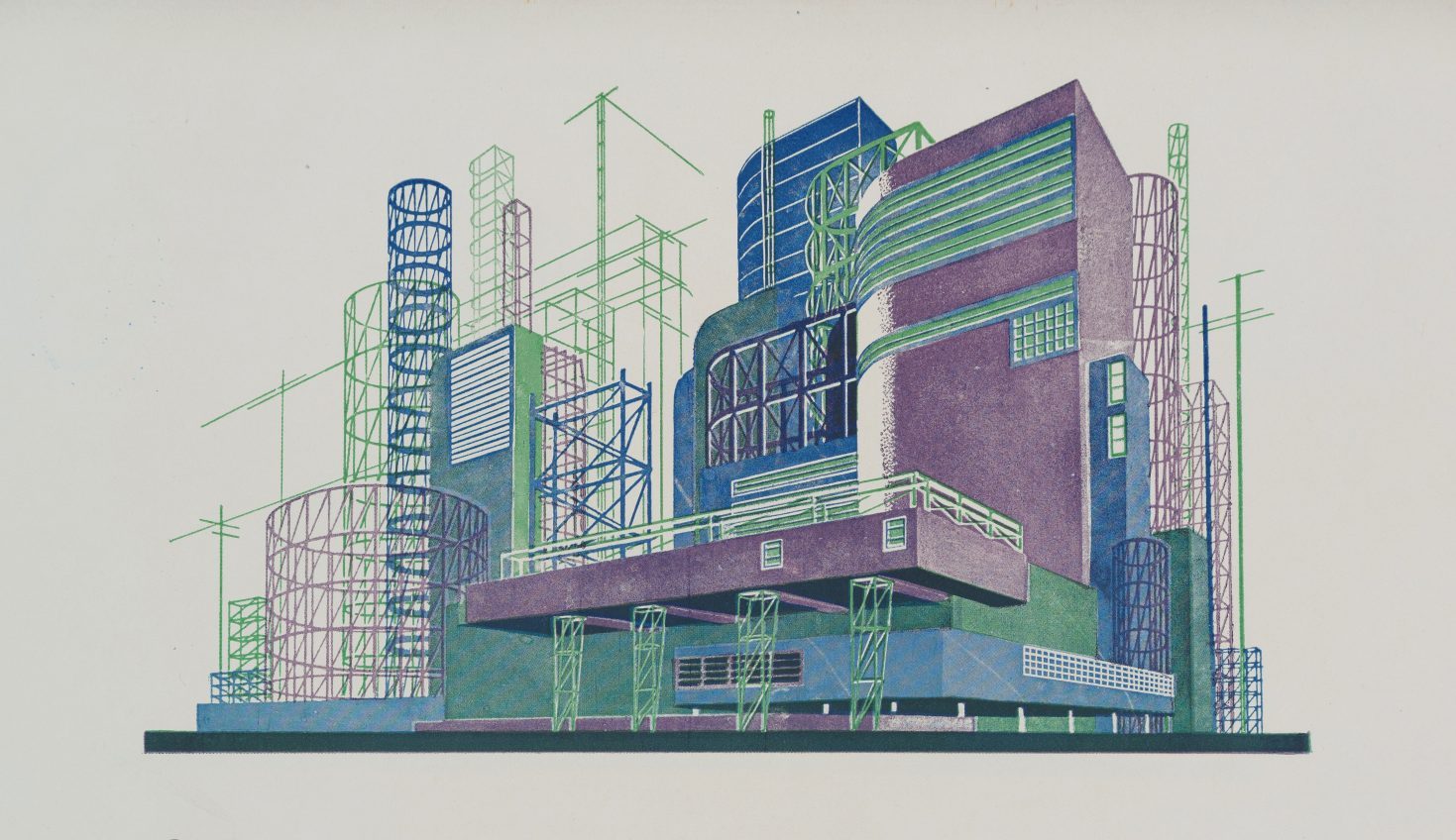Ya Gallery Art Center, Mystetskyi Arsenal
Curated by Pavlo Gudimov
Partner – Zabolotnyi State Scientific Library of Architecture and Construction
With the participation of Factum Arte, Borys Yerofalov and Semen Shyrochyn
Assistant curator – Hanna Oryshchenko
Humanity has always been interested in only one question: what will happen next – tomorrow, next year or through the centuries? The past cannot be undone, the present is marred by numerous shortcomings, the future gives hope for a better life and leaves plenty of room for fantastic and utopian ideas. The possibility of improving and modifying the world prompted thinkers, painters, architects and other artists to come up with futuristic fantasies in various chronological intervals and geographically defined territories.
The notion of “tomorrow” has become increasingly widespread with the development of science and the expansion of its dominant role over religion. The discovery of America by Columbus, the theory of perspective of Leon Battista Alberti, the scientific activity of Nicolas Copernicus, Galileo Galileo and Giordano Bruno contributed to the broadening of the horizons of knowledge and, accordingly, gave an impetus to the creation of new theories and fantasies about the future.
During the Renaissance, emerged the famous inventions of Leonardo da Vinci that were ahead of the time for several centuries and became unconditional proof of the modification of human consciousness – from fatalism associated with religious dominance to belief in progressiveness. This process became dynamic and inevitable, and was also extended to art, through the prism of which the artists reflected not only their contemporary reality, but also guesses about the future and confidence in what exactly should it be in the perfect dimension. So architects turned to the modeling of utopian cities and buildings (Giovanni Battista Piranesi, Claude-Nicolas Ledoux, Jean-Jacques Lequeu, Etienne-Louis Boullee, Yakiv Chernikhov, Le Corbusier and Ukrainian architects of late modernism), artists filled the paintings with symbols incomprehensible for their contemporaries, which, however, can be logically explained nowadays, and directors, armed with cameras and special effects, tried to visualize the most daring futuristic ideas of writers (A Trip to the Moon by Georges Méliès, Aelita by Yakov Protazanov, Metropolis by Fritz Lang, Modern Times by Charlie Chaplin).
The subjective expression of creative thought of the future by the artists of the past helps to answer the questions about the desire and aspiration of different generations and allows us to analyse the evolution of progress from the contemporary perspective. The visual narrative in this case becomes a sort of a “map” that helps us not to get lost in the infinity of thoughts associated with representations, fantasies and predictions.
The exhibition presents views of visionaries in the area of architecture, inventions, and cinema. In particular, the originals of utopian projects for the reconstruction of Kyiv by Ukrainian architects of Stalin period (Oleksandr Vlasov, Oleksiy Tatsiy, Dmytro Chechulin), are of great value.
